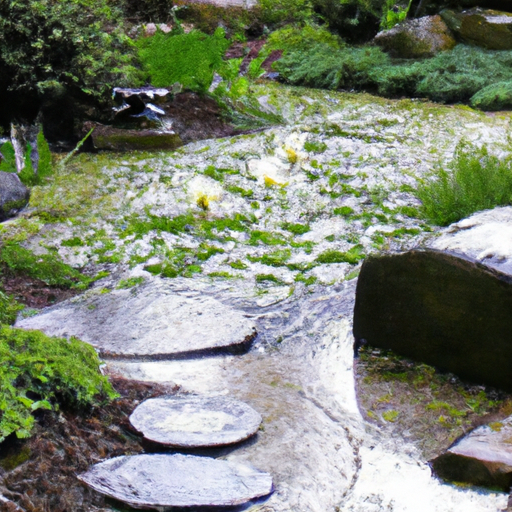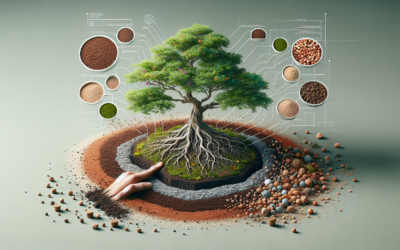Imagine a tranquil journey where you embrace the beauty of rainfall in the serene setting of Japanese gardens. The article “Walking In A Rain Garden: Embracing The Beauty Of Rainfall In Japanese garden design” is designed to guide you through the beautifully crafted landscapes influenced by the aesthetics of Japanese garden design. The charm of rain gardens serves as perfect symbols of harmony between nature and art, offering you a mesmerizing experience, even amidst torrential rains. Get ready to immerse yourself into the artful balance between tranquility and vitality that these rain gardens offer, and how each element within, be it raindrops or lotus leaves, contributes to forge a beautiful, tranquil sanctuary.
Understanding the Concept of a Rain Garden
Defining a rain garden
A rain garden is a beautifully sculpted depression in this landscape that is engineered to capture, filter, and absorb run-off storm water. Primarily filled with lush, water-loving plants, it uses Mother Nature’s rains to nurture a lush green area, while also reducing water pollution and controlling storm water runoff.
Origin and philosophy of rain gardens
The concept of rain gardens dates back centuries and are deeply integrated into the philosophies of many cultures, most notably the Japanese. The Japanese have a profound love for nature and appreciate the beauty of rain – so it’s only natural that they have incorporated this admiration into their gardening techniques. The philosophy behind Japanese rain gardens centers on the notion of “wabi-sabi,” a worldview focused on the acceptance of imperfection and the transient nature of life.
How rain gardens differ from regular gardens
Unlike regular gardens that seek to control the elements, rain gardens harness the power of nature and work in harmony with it. These gardens are intentionally designed to capture rainwater and are generally planted with native, water-loving plants. In contrast, traditional gardens often require external irrigation and are more focused on order, symmetry, and control.
The Role of Rainfall in Japanese Garden Design
Rain as a symbol in Japanese culture
Rain holds deep cultural significance in Japan, reflecting the sense of beauty and tranquility associated with fleeting, transient moments. The Japanese term for this is “mono no aware,” which translates to ‘the pathos of things’, describing the gentle sadness or wistfulness at their passing. Rain, as a recurrent yet always unique occurrence, is a prime example of this concept.
Incorporating rainfall in garden designs
In traditional Japanese garden designs, rainfall is not only accommodated but also celebrated. From carefully placed stones that reveal their intricate textures when wet, to plants that capture and sparkle with raindrops, to water features that create soothing sounds as rainwater falls on them, every detail is considered.
How rain influences Japanese aesthetic
The rain profoundly influences the Japanese aesthetic, creating a distinct, serene, and dramatic environment. The wetness brings out the vibrant colors of the plants and creates a reflective surface on the rocks and pavement, adding to the overall textural richness of the scene.
Features of a Japanese Rain Garden
Types of plants used
The plants used in a Japanese rain garden are usually native to Japan, including various types of ferns, grasses, flowers, and even trees. These species are known for their ability to thrive in water-rich environments.
Importance of rocks and stone arrangements
In Japanese gardens, rocks and stones are not merely decorative elements but are essential in telling a story and creating a miniature landscape. They can represent mountains, islands, or even animals.
The role of water features and bodies
Water features such as streams, ponds, and waterfalls play a crucial role in these gardens. They offer a place for the rainwater to gather, creating a habitat for various aquatic plants and animals and adding to the overall tranquility of the space.
Use of elements to capture and redirect rain
A unique aspect of Japanese rain gardens is the use of elements like rain chains and strategically placed stones to capture and redirect rainfall. These elements serve a practical function by managing water flow, while also adding a visually intriguing component to the garden.
Walking through a Japanese Rain Garden
How to navigate a Japanese rain garden
Walking through a Japanese rain garden is a sensory experience meant to engross you in the beauty of nature. Paths often wind through the garden, leading you past various features and offering different views and perspectives.
Sensory experiences of walking in the rain
The experience of walking in a rain garden in the midst of a shower is incredibly unique. You can hear the soothing sound of raindrops hitting the foliage and the water features, see the delicate droplets clinging to the plants, and feel the moist coolness in the air.
Notable rain gardens in Japan to experience
There are numerous rain gardens in Japan that you can visit to experience this beauty firsthand. Some notable ones include the Kenrokuen Garden in Kanazawa, the Katsura Imperial Villa in Kyoto, and the Adachi Museum of Art in Shimane.
How Rain Affects the Beauty of a Garden
Visual effects of rain on the landscape
Rain has a transformative effect on the landscape. It adds a shimmering quality to the scenery, makes colours seem more vivid, and creates a sense of freshness.
Impact on garden flora and fauna
Rain’s impact extends to the garden’s flora and fauna. It encourages growth and brings out the vibrant shades in plants. Meanwhile, many animals and insects typically emerge either during or after a rain shower, creating a lively atmosphere in the park.
Changes in ambiance and atmosphere with rain
The ambiance of a garden changes dramatically with rain. It creates a sense of serenity and calmness, while the smell of rain-soaked earth combined with the fragrance of wet plants provides a refreshing and calming natural aroma.
Designing Your Own Rain Garden
Fundamental principles for Japanese garden design
In designing your own Japanese rain garden, begin by understanding the fundamental principles of Japanese garden design – minimalism, naturalness, and asymmetry.
Choosing appropriate plants and materials
Choose native, water-loving plants that will thrive in a rain garden. Also, consider the use of materials like rocks, stones, and gravel, which hold substantial importance in Japanese gardens.
Creating a rain-friendly layout
Ensure that your garden layout is rain-friendly. Consider features that will capture and redistribute rainwater effectively, along with elements that will show rain’s beauty like water features and rain chains.
Maintaining a rain garden over time
Maintaining a rain garden requires consistent care. Prune and trim the plants regularly, and keep the water features clean. Remember, the essence of a rain garden is its ability to fit naturally into its environment.
Benefits of a Rain Garden
Environmental advantages of rain gardens
Rain gardens contribute to conserving water resources and reducing water pollution. By absorbing storm water runoff, they prevent excess water from flooding storm sewer systems and polluting local water bodies.
Aesthetic merits of a water-centric garden
The aesthetic merits of rain gardens are numerous – they add beauty and character to a landscape, provide a habitat for various flora and fauna, and create a serene environment that can be enjoyed year-round.
Health and wellness benefits of rain gardens
Rain gardens are proven to have health and wellness benefits. They promote peace, tranquility, and enhance our connection to nature, thereby promoting mental well-being.
Challenges in Maintaining a Rain Garden
Potential issues and problems
Maintaining a rain garden may present some challenges, such as excess water flooding the garden, plants dying from over-saturation, or the occurrence of mosquitoes.
Effective solutions and preventive measures
These issues can generally be overcome with effective planning and preventive measures. For example, ensure proper drainage to avoid flooding and choose plants that can survive in both very wet and very dry conditions.
Resources and help for Japanese rain garden maintenance
Consider seeking advice from horticultural societies or hiring a professional landscaper experienced in Japanese gardens for initial setup and maintenance.
Impact of Seasonal Changes on the Rain Garden
How different seasons affect the garden
Seasonal changes greatly influence the garden’s appearance and maintenance. The greenery flourishes in monsoon, leaves turn vibrant in fall, and the garden takes a serene, quiet turn in winters.
Adapting to the changing weather conditions
Adapting the garden to changing weather conditions keeps the environ lively and visually pleasing throughout the year.
Season-based garden care and maintenance
Season-based garden care involves adjusting plant care per their respective growing periods, tidying fallen leaves, and protecting the garden from intense weathers.
Conclusion: Embracing Rain in Garden Design
Reflecting on rain’s transformative power
Embracing rain in garden design allows us to witness the transformative power of nature firsthand. It enables us to create a living, evolving space that changes and grows with the seasons.
Reimagining gardens in rainy climates
Rather than viewing rain as an obstacle, we can reimagine it as an opportunity to create unique, beautiful spaces that celebrate the natural world.
Final thoughts on the beauty of rainfall in Japanese garden design
The beauty of rainfall in Japanese garden design is something truly remarkable to behold. It is a testament to the Japanese philosophy of embracing nature in all its forms. Indeed, walking in such a garden during a soft rain shower can be a deeply moving and tranquil experience. The beauty of this blend of nature and design serves as a reminder of the inherent beauty found in our natural world.









